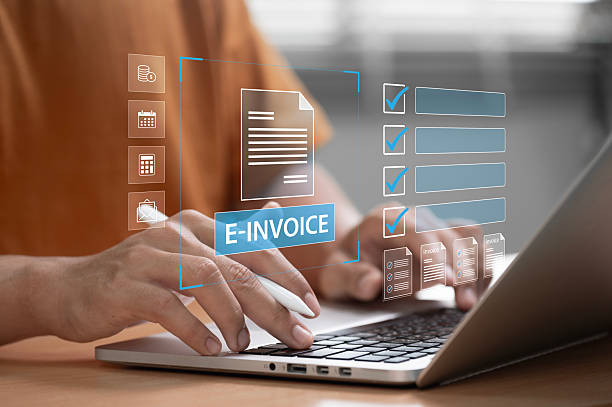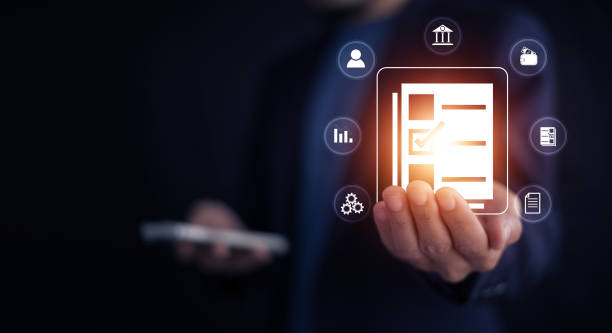What is On-Page SEO and Why Does it Matter?

What is On-Page SEO and Why Does it Matter?
#On-Page SEO is the set of actions you take within your website to improve your site’s ranking in search engines like Google.
These actions include optimizing content, HTML code, site structure, and user experience.
The importance of on-page SEO stems from the fact that search engines pay special attention to the content within a web page to understand its topic and quality.
By optimizing the internal elements of the site, you help search engines better understand your site and, as a result, gain a better ranking in search results.
Optimizing on-page SEO brings more organic (free) traffic to your site and ultimately helps increase your sales and revenue.
On-page SEO is one of the main pillars of SEO, alongside Off-Page SEO and Technical SEO.
A successful SEO strategy requires attention to all three of these aspects.
With optimized on-page SEO, you can outrank your competitors and gain a better position in search results.
Are you worried about the low conversion rate of your online store and not getting the sales you want?
Rasaweb is your specialized solution for having a successful online store.
✅ Significant increase in conversion rate and sales
✅ Professional and user-friendly design to attract customer satisfaction
⚡ Are you ready for a transformation in online sales? Get free consultation!
Keyword Research, the First Step in On-Page SEO
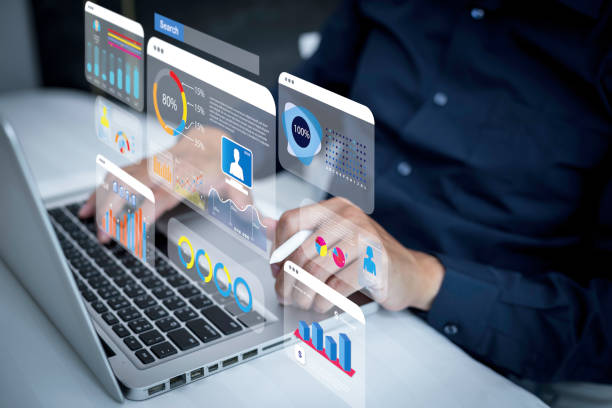
Keyword Research, the First Step in On-Page SEO
Keyword research is the cornerstone of any successful on-page SEO strategy.
The purpose of this research is to identify the phrases that users use in search engines to find your products or services.
By understanding these keywords, you can optimize your content to appear in relevant search results.
There are various tools for keyword research, including Ahrefs, Ubersuggest, and Google Keyword Planner.
These tools help you review related keywords, search volume, and their competition.
When choosing keywords, look for phrases that are both relevant to your business and have significant search volume.
Also, pay attention to the competition for each keyword and try to choose phrases that you have a better chance of ranking for.
After identifying keywords, use them in titles, meta descriptions, body text, and other elements of your web page.
Keep in mind that excessive use of keywords (Keyword Stuffing) can negatively affect your site’s ranking.
On-page SEO requires balance and naturalness in the use of keywords.
Optimizing Titles and Meta Descriptions
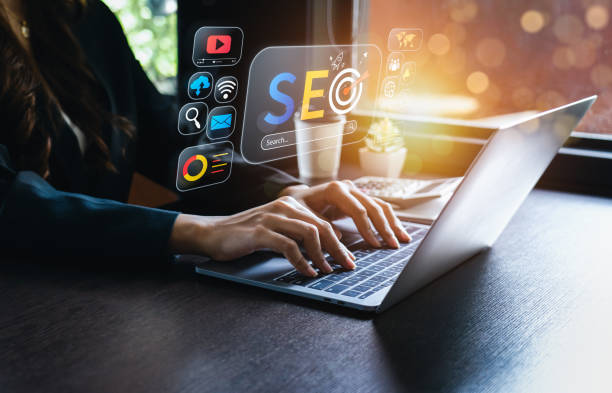
Optimizing Titles and Meta Descriptions
Title Tags and Meta Descriptions are among the most important elements of on-page SEO.
The title is the title of your web page that appears in search results.
The title should be attractive, relevant, and contain the page’s main keyword.
The title length should not exceed 60 characters, otherwise, it will be truncated in search results.
The meta description is a short summary of the page’s content that appears below the title in search results.
The meta description should be attractive and persuasive to encourage users to click on your link.
The meta description length should not exceed 160 characters.
Optimizing titles and meta descriptions helps search engines better understand your page’s topic and helps users decide whether your page is relevant to their needs.
To optimize titles and meta descriptions, use the page’s main keywords in them, but avoid excessive use of keywords.
Also, try to write titles and meta descriptions in a way that is attractive and useful to users.
Optimizing titles and meta descriptions is one of the most important aspects of on-page SEO and plays a key role in attracting audiences and increasing organic traffic.
| Element | Description |
|---|---|
| Title Tag | The title of the page that is displayed in search results. |
| Meta Description | A short summary of the page’s content that is displayed under the title in search results. |
| Optimization Tips | Description |
|---|---|
| Appropriate Length | Title less than 60 characters, meta description less than 160 characters |
| Keywords | Use the page’s main keywords |
Optimizing Content for On-Page SEO
![]()
Optimizing Content for On-Page SEO
Content is the king of SEO.
High-quality, relevant, and valuable content not only attracts users but also helps search engines better understand your site’s topic.
To optimize content for on-page SEO, pay attention to the following: place the main content at the top of the page, optimize your content for target keywords, use images and videos to make the content more attractive, improve content readability, and update your content regularly.
Producing high-quality content that is relevant to the audience’s needs is one of the most important factors in success in on-page SEO.
Your content should answer users’ questions, solve their problems, and provide valuable information to them.
Also, your content should be such that it encourages users to share it.
By producing high-quality content, you can attract more organic traffic to your site and improve your site’s ranking in search results.
On-page SEO with attractive and practical content can lead you to your goals.
Does your current corporate website present a worthy image of your brand and attract new customers?
If not, turn this challenge into an opportunity with Rasaweb’s professional corporate website design services.
✅ Significantly improves the credibility and image of your brand.
✅ Paves the way for attracting new leads and customers.
⚡ Contact Rasaweb now to receive free and expert advice!
Proper URL Structure and SEO

Proper URL Structure and SEO
URL structure is an important aspect of on-page SEO that is often overlooked.
A proper URL structure helps search engines and users better understand your page’s topic.
URLs should be short, descriptive, and contain the page’s main keywords.
Avoid using special characters and many numbers in URLs.
Also, try to organize URLs hierarchically to reflect your site’s structure.
For example, a suitable URL for a product page could look like this: `example.com/category/product-name`.
Using a proper URL structure not only helps your site’s SEO but also improves user experience.
Users can easily identify the page’s topic through the URL and access the pages they want.
On-page SEO with the correct URL structure can improve your ranking.
Optimizing Images for SEO

Optimizing Images for SEO
Images play an important role in the attractiveness and user experience of your site.
However, if images are not properly optimized, they can reduce site loading speed and negatively affect SEO.
To optimize images for SEO, pay attention to the following: use appropriate formats such as JPEG or PNG, compress images before uploading, use descriptive filenames, use Alt Text for images, and adjust the image size to the required dimensions.
Alt Text is the text that is displayed instead of the image if the image fails to load.
Alt Text should be descriptive and relevant to the image content and contain the page’s main keywords.
By optimizing images, you can improve your site’s loading speed, enhance user experience, and increase your site’s ranking in search results.
On-page SEO requires special attention to detail, and image optimization is no exception.
Internal Linking and SEO

Internal Linking and SEO
Internal linking is the process of creating links between different pages of your website.
Internal linking helps search engines better understand your site’s structure and helps users easily navigate your site.
Internal linking can also help distribute SEO authority (Link Juice) throughout your site.
For effective internal linking, pay attention to the following: create links to related pages, use descriptive Anchor text, avoid creating too many links on one page, and create links to important pages of your site.
Anchor text is the text that is displayed as a link.
Anchor text should be descriptive and relevant to the destination page.
Internal linking is one of the most important on-page SEO techniques that can help improve your site’s ranking in search results.
On-page SEO with principled linking can be highly effective.
| Link Type | Description |
|---|---|
| Internal Link | A link from one page to another within the same website. |
| External Link | A link from your website to another website. |
| Optimization Tips | Description |
|---|---|
| Relevance | Links should be created to related pages. |
| Anchor Text | Use descriptive anchor text that is relevant to the destination page. |
Optimizing Site Loading Speed
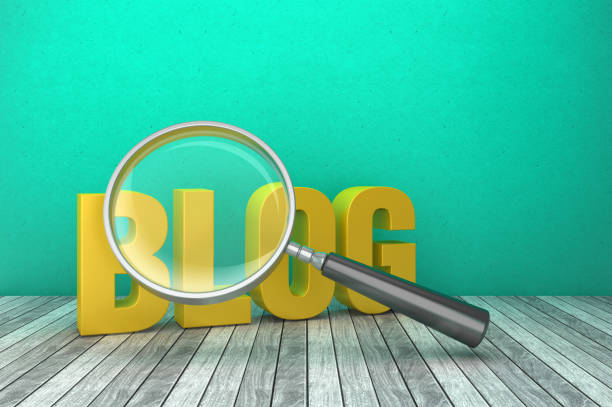
Optimizing Site Loading Speed
Site loading speed is one of the important factors in user experience and SEO.
Users expect web pages to load quickly, and if a site is slow, the likelihood of users leaving it increases.
Search engines also value site loading speed and prefer faster sites in search results.
To optimize site loading speed, pay attention to the following: use quality hosting, optimize images, use a CDN, compress HTML, CSS, and JavaScript code, and use Cache.
There are various tools for testing site loading speed, including Google PageSpeed Insights and GTmetrix.
By optimizing site loading speed, you can improve user experience, reduce Bounce Rate, and increase your site’s ranking in search results.
On-page SEO with high loading speed can have a good response.
Are you disappointed with the low conversion rate of your online store?
Rasaweb is your definite solution with professional online store design!
✅ Increase your sales and revenue
✅ An unparalleled user experience for your customers
⚡ Get a free consultation now!
Responsive Design and Mobile Compatibility

Responsive Design and Mobile Compatibility
Today, most users access the Internet through mobile devices.
Therefore, responsive design and mobile compatibility are essential for any website.
Responsive design means that your site automatically adapts to the screen size of different devices (mobile, tablet, desktop).
If your site is not optimized for mobile, users will have a bad user experience and are more likely to leave your site.
Search engines also value mobile compatibility and prefer mobile-friendly sites in search results.
To ensure your site’s compatibility with mobile, you can use Google’s Mobile-Friendly Test.
On-page SEO with responsive design helps you surpass competitors.
Monitoring and Analyzing On-Page SEO

Monitoring and Analyzing On-Page SEO
On-page SEO is an ongoing process and requires monitoring and analysis.
With monitoring and analysis, you can evaluate your on-page SEO performance and identify your strengths and weaknesses.
There are various tools for monitoring and analyzing SEO, including Google Search Console and Google Analytics.
Using these tools, you can track your site’s traffic, check your keyword ranking, and identify SEO problems on your site.
Based on the results of monitoring and analysis, you can improve your on-page SEO strategy and achieve better results.
On-page SEO requires continuous follow-up and evaluation in order to function effectively.
To improve on-page SEO on websites, we must pay close attention to monitoring and analysis of on-page SEO.
Frequently Asked Questions
| Question | Answer |
|---|---|
| What is On-page SEO? | On-page SEO refers to the set of actions that are performed within your website to improve its ranking in search engine results. This includes optimizing content, site structure, and HTML code. |
| Why is on-page SEO important? | On-page SEO helps search engines understand the content of your page and determine whether your content is relevant to searchers. It is the foundation of any successful SEO strategy. |
| What are the key elements of on-page SEO? | Page title (Title Tag), meta description (Meta Description), keyword usage, image optimization, heading structure (H1, H2, …), internal linking, and content quality are key elements. |
| How to optimize the page title (Title Tag)? | The page title should include the main keyword, be attractive and compelling to click, and be between 50 and 60 characters (or appropriate pixels) in length so that it is fully displayed in search results. |
| What role does the meta description (Meta Description) play in on-page SEO? | The meta description is a summary of the page content that is displayed below the title in search results. Although it does not directly affect ranking, it helps SEO by increasing click-through rate (CTR). |
| What is the importance of using heading structure (H1, H2, H3) in on-page SEO? | Headings structure the content of the page and make it easier to read. H1 is usually the main title of the page and should include the keyword. H2 and H3 are used to organize subsections and help search engines understand the hierarchy of content. |
| How to use keywords effectively in content? | Keywords should be used naturally and logically throughout the content, including the introduction, body, and conclusion. Avoid overfilling keywords (Keyword Stuffing). |
| What steps are involved in optimizing images for on-page SEO? | Includes compressing images to reduce volume, using descriptive filenames, adding appropriate alternate text (Alt Text), and optimizing image title and description. Alt Text is essential for accessibility and helping search engines understand the content of the image. |
| What is internal linking and what are its benefits? | Internal linking means creating a link from one page on your website to another page on the same website. This helps users easily navigate your site, distributes page authority throughout the site, and helps search engines better understand your site’s structure. |
| What is the importance of content quality in on-page SEO? | Quality, accurate, comprehensive, and valuable content for users is the cornerstone of on-page SEO. Search engines prefer content that meets users’ needs. Quality content leads to more user time on the site (Dwell Time) and lower bounce rate, which are positive SEO signals. |
And other services of Rasa Web advertising agency in the field of advertising
Smart Marketplace: A fast and efficient solution for managing campaigns with a focus on marketing automation.
Smart Data Analysis: A novel service to increase user engagement through Google ad management.
Smart Sales Automation: An innovative platform for improving campaign management with marketing automation.
Smart Data Analysis: Professional optimization for user engagement using attractive user interface design.
Smart SEO: A fast and efficient solution for digital branding with a focus on dedicated programming.
And more than hundreds of other services in the field of internet advertising, advertising consulting, and organizational solutions
Internet advertising | Advertising strategy | Advertorial
Resources
The Complete Guide to On-Page SEO at Search Engine Journal
,On-Page SEO Tutorial at Moz
,On-Page SEO: The Complete Guide at Ahrefs
,A Step-by-Step Guide to On-Page SEO from Neil Patel
? In today’s competitive world, a strong online presence is the key to success. Rasaweb Afarin Digital Marketing Agency offers comprehensive services including fast website design, SEO, and social media management to take your business to the top. Contact us today for free consultation and to learn more about our services. 021-91097325
📍 Tehran, Mirdamad Street, next to the Central Bank, South Kazeroon Alley, Ramin Alley No. 6

